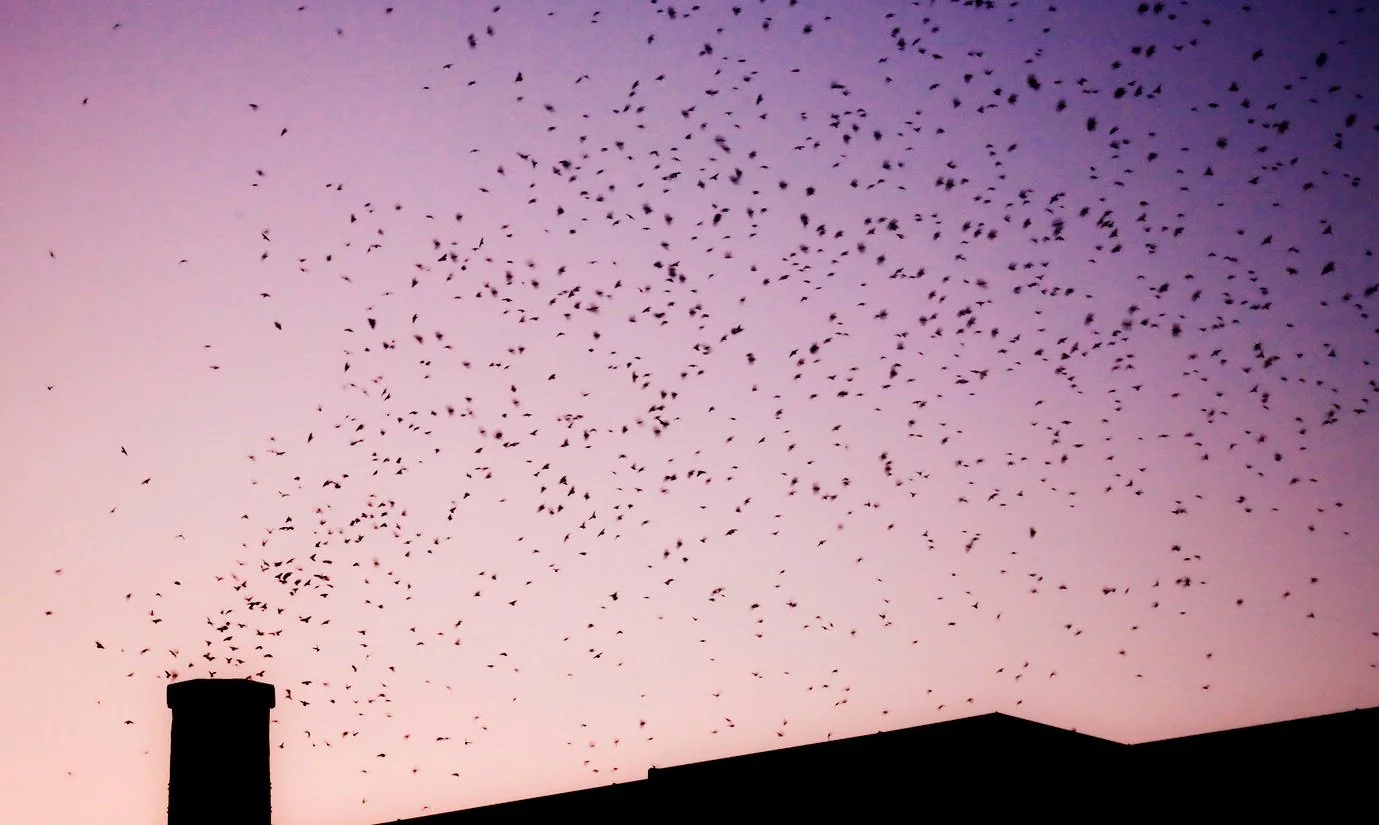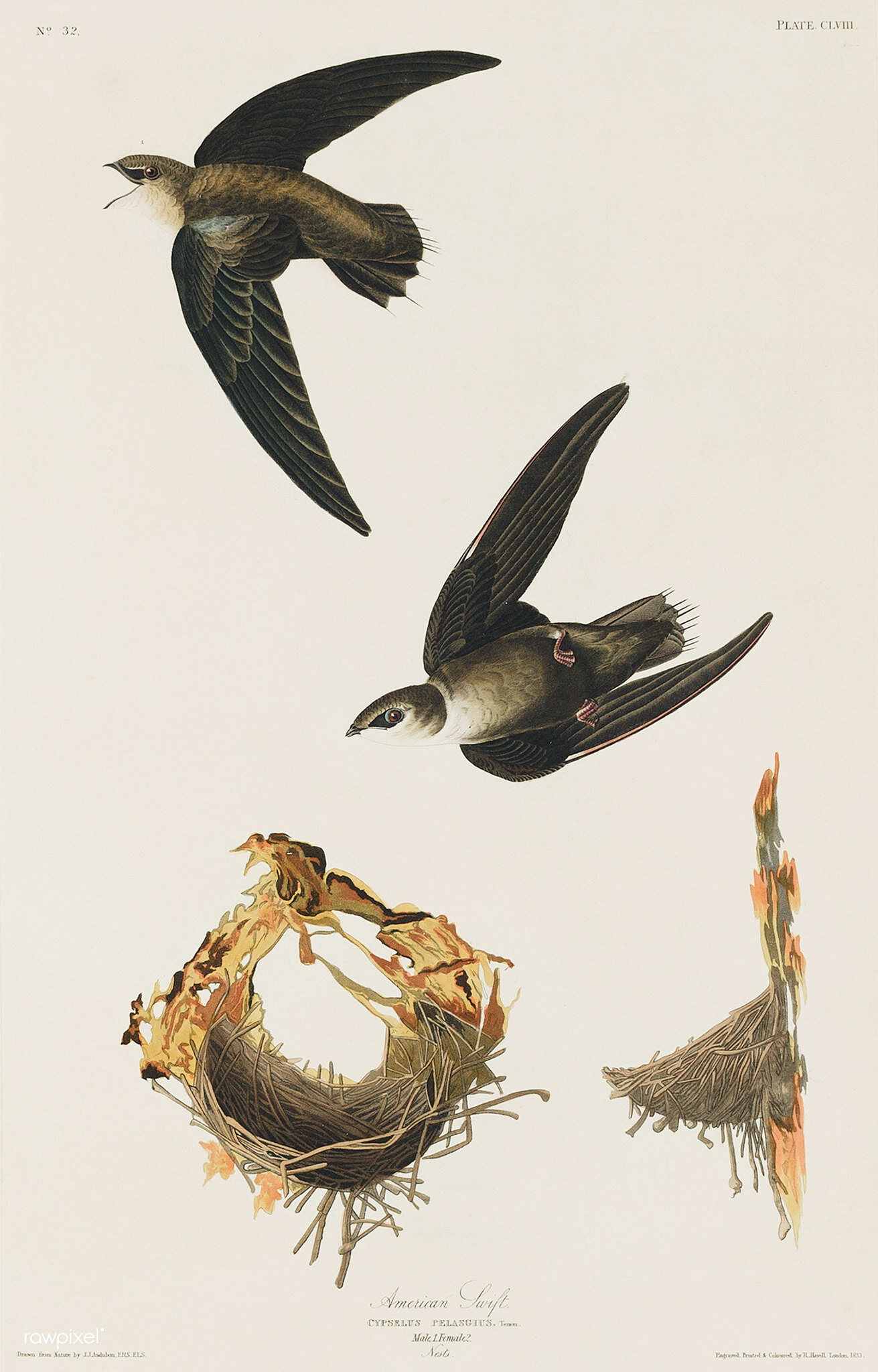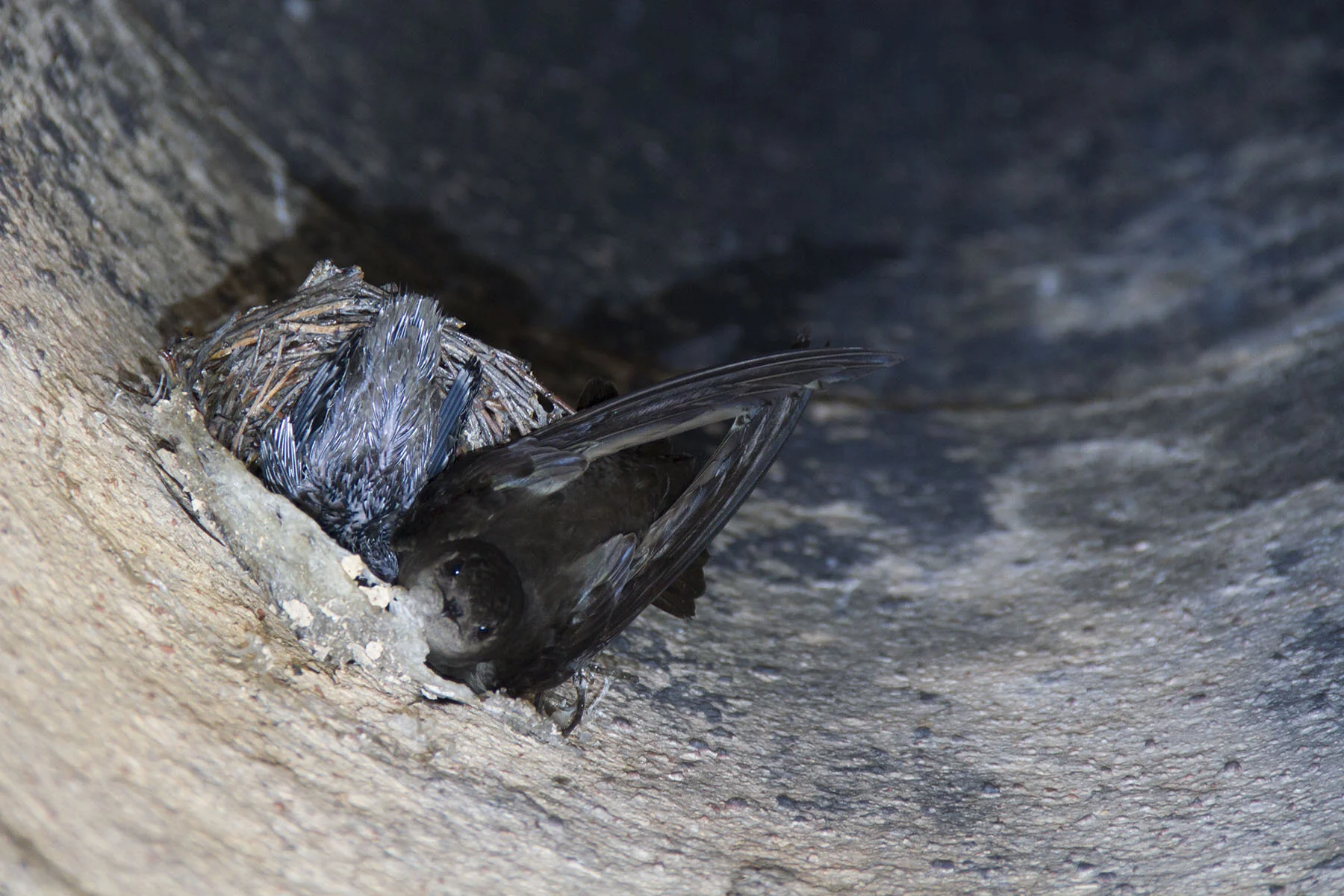During our current breeding bird atlas work, we surveyed all the villages, towns, and cities in Columbia County and found swifts in all communities. Atlas volunteers are observing a few birds in the county but chimneys are hard to locate. We were lucky to find an old one-room school house with a nesting pair.
We confirm nesting by seeing swifts enter chimneys during the day in the breeding season and also by seeing swifts breaking off twigs from dead limbs for nest building while in flight. The current breeding bird atlas has photos of two swift nests: one in a chimney in Grant County, and one in a silo near Poynette found and photographed by Michael John Jaeger.
During migration chimney swifts forage in flocks over forests and open areas and roost in large numbers chimneys at night. There’s warmth in numbers: during cold nights, the temperature inside a chimney roost can be 70°F warmer than outside.
They spend the winter in the upper Amazon basin of Peru, Ecuador, Chile, and Brazil, where they are found in open terrain and on roosts in chimneys, churches, and caves.














